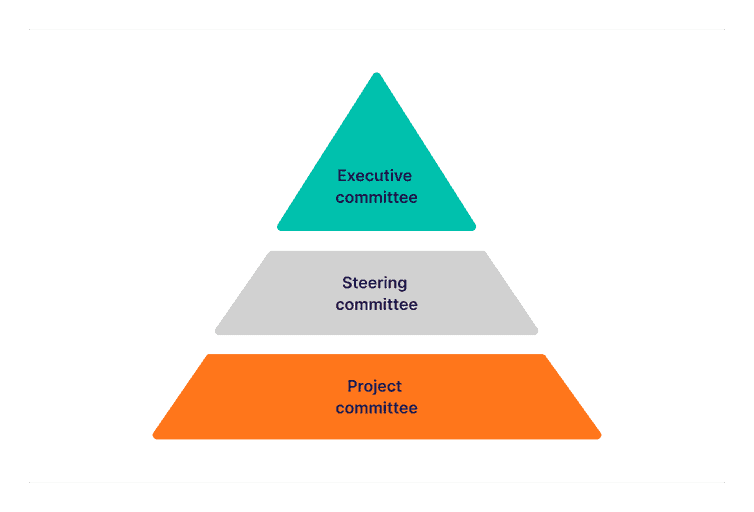This is the early access documentation preview for Custom Views. This documentation might not be in sync with our official documentation.
Project steering
Clearly defined stakeholder leadership is critical to the delivery of a successful project.
Key leadership committees help build a strong foundation for project success. These committees guide the team, set priorities, and align efforts with the strategic goals of the organization. This document focuses on the importance of the project committee.
Executive committee
An executive committee for a commerce project is typically a group of senior leaders and decision-makers (for example, CEO, CTO, CFO, and CMO) within an organization who are responsible for overseeing and making key strategic decisions related to the project.
Steering committee
An executive committee and a steering committee play essential roles in organizational governance and project management, but they operate at different levels within the organization.
The executive committee is concerned with high-level corporate strategy and governance for the entire organization, while the steering committee is dedicated to guiding and overseeing a specific project or initiative to ensure its success.
Project committee
Having experienced business, technical, and delivery leads as part of the project committee is common practice, as these roles serve distinct purposes and are essential to the successful execution of the project.
Business lead
- Requirement gathering: gathers and defines the business requirements for the project. They understand the client's needs and the market, and they translate these into specific requirements.
- User-centric approach: focuses on the end-user experience, ensuring that the project meets customer expectations and aligns with the company's business goals.
- Priority setting: prioritizes features and functionalities based on business value, customer impact, and market trends.
- Feedback and iteration: gathers feedback and adapts the project to changing business needs, ensuring that the project remains relevant and effective.
Technical lead
- Technical expertise: ensures that the chosen technology stack and architecture is suitable for the project's requirements.
- Development oversight: oversees the development team, ensuring that coding standards, best practices, and quality assurance are maintained.
- Problem solving: addresses technical challenges and makes decisions about system design, integration, and scalability.
- Integration and security: ensures that the commerce platform integrates seamlessly with other systems, meets security requirements, and performs efficiently.
Delivery lead
- Coordination and communication: manages and coordinates all aspects of the project. They ensure that everyone involved in the project is on the same page and working towards common goals.
- Timeline and budget management: manages project timelines and budgets, ensuring that the project stays on track and within the allocated resources.
- Risk mitigation: identifies potential risks and develops strategies to mitigate them, ensuring the success of the project and minimizing unexpected setbacks.
- Stakeholder engagement: engages with various stakeholders, including team members, executives, and clients, to gather requirements, provide updates, and address concerns.
